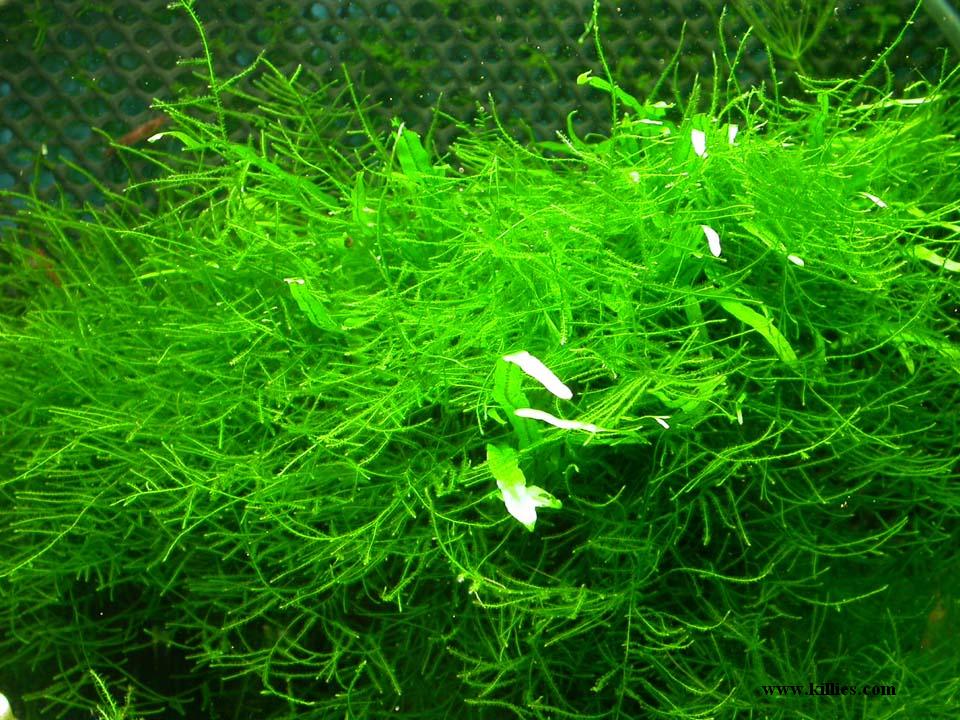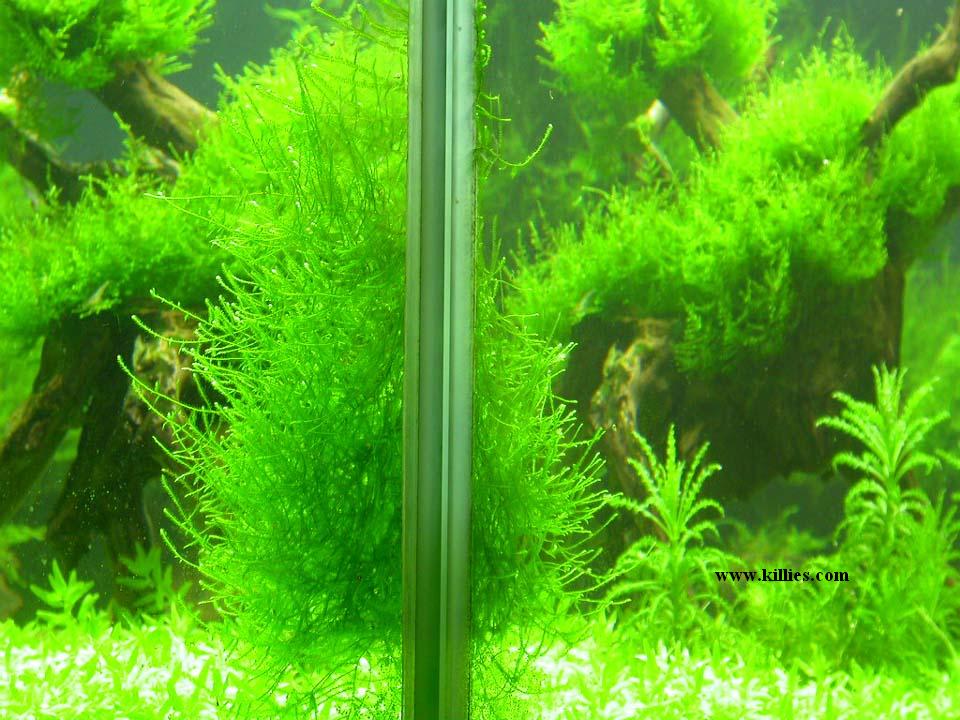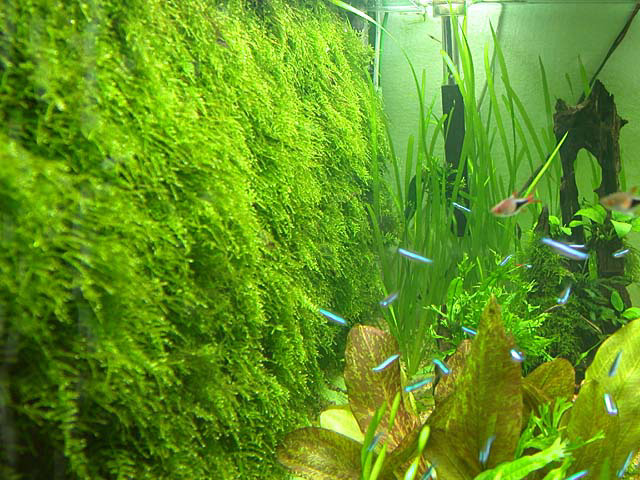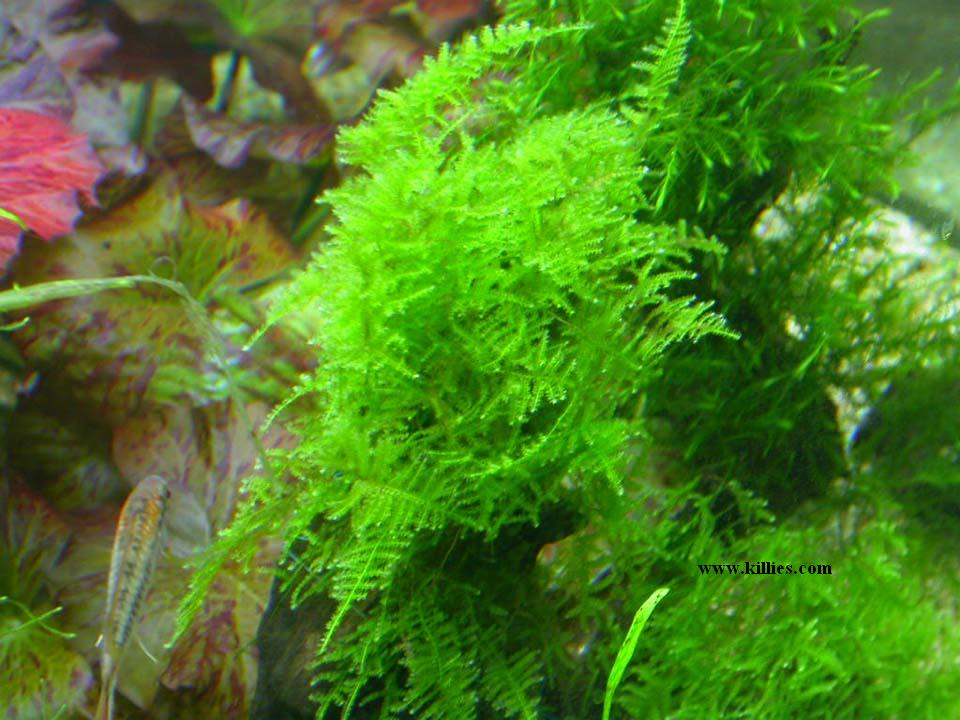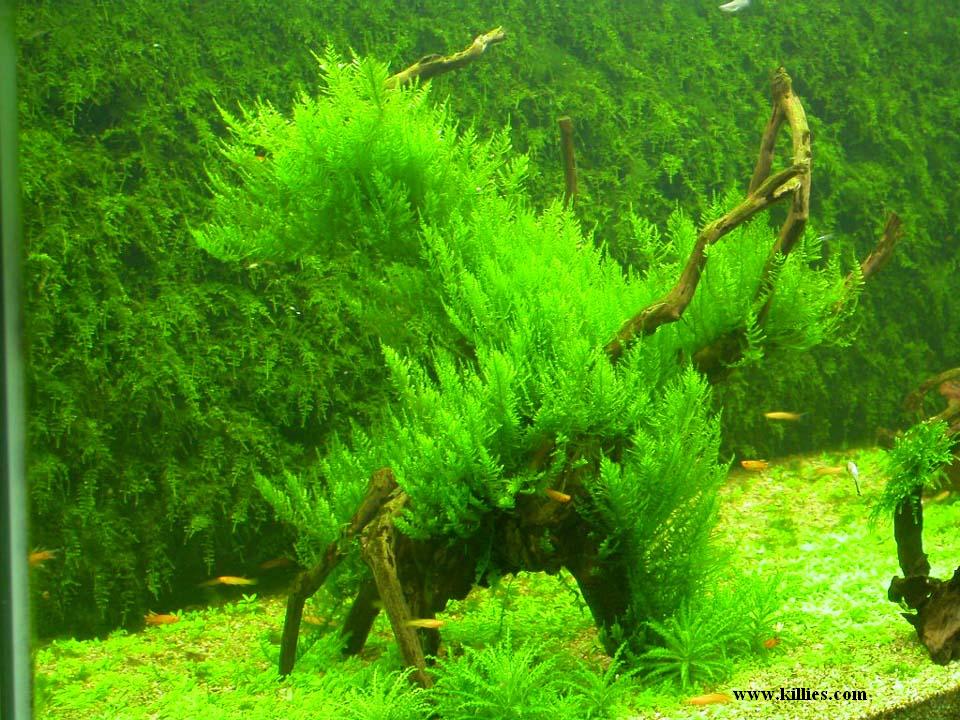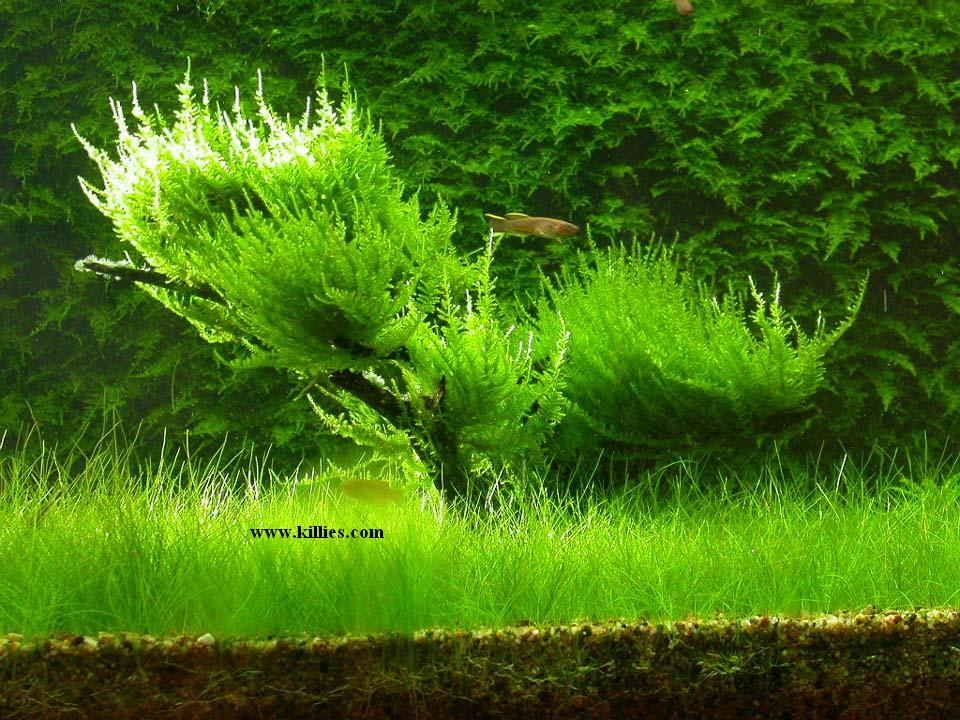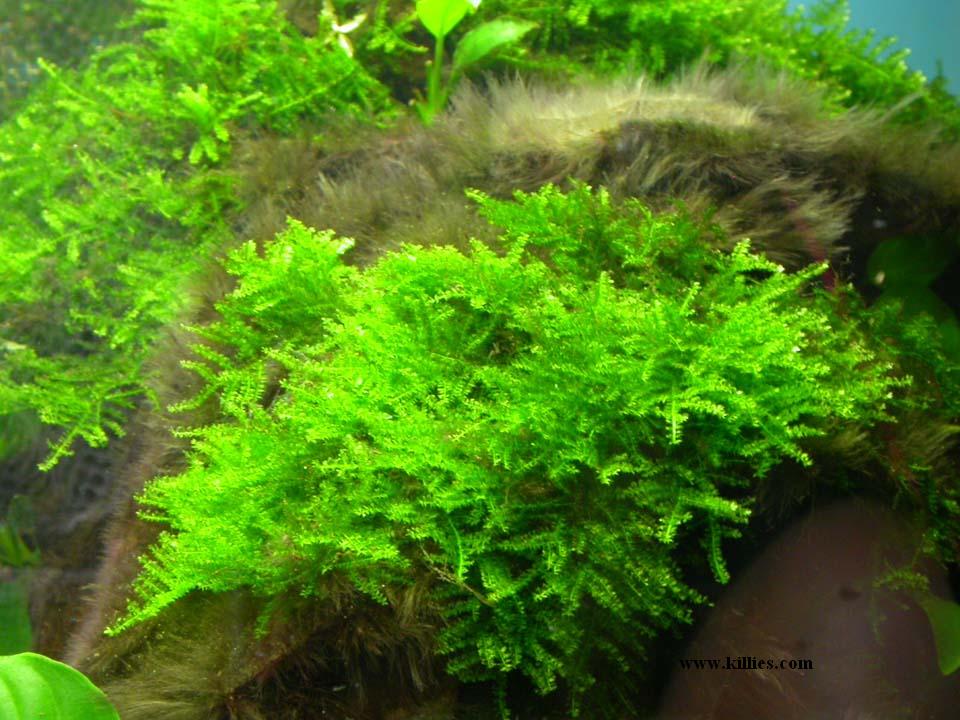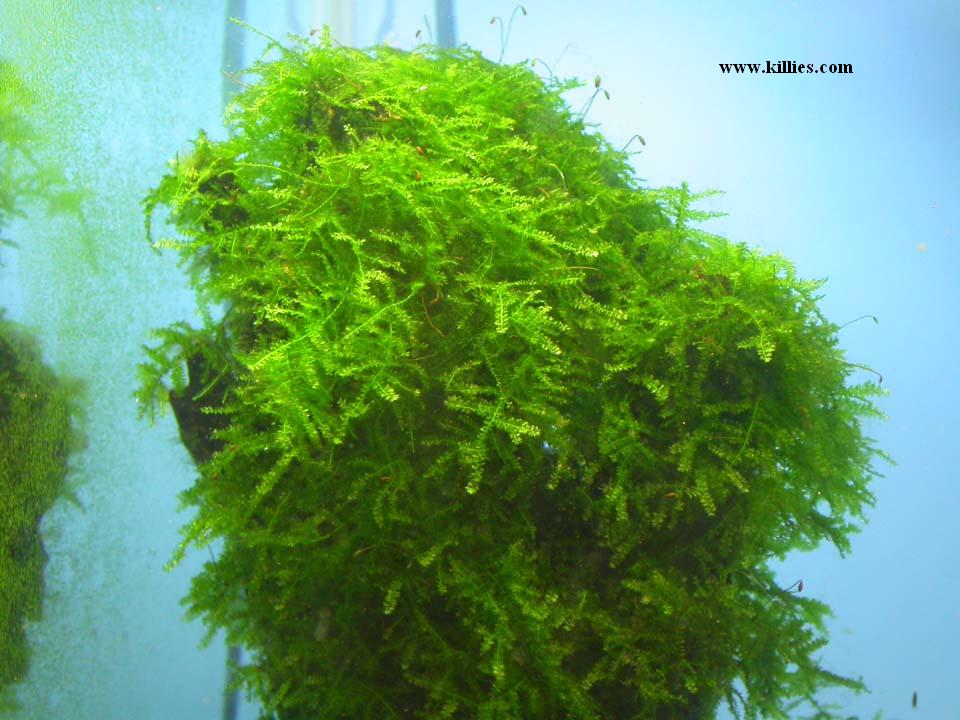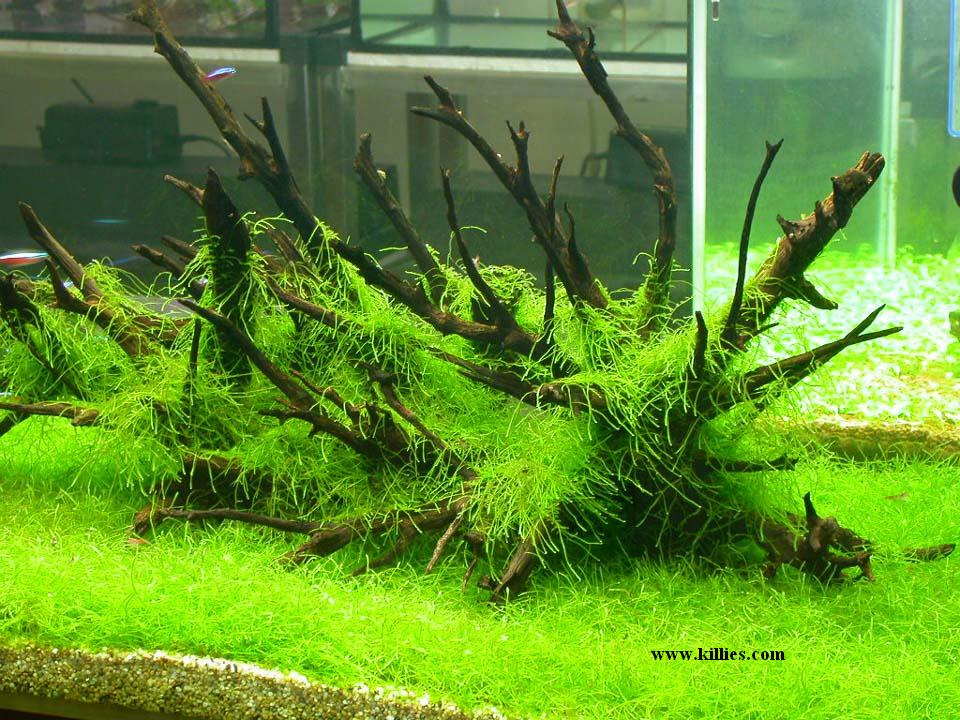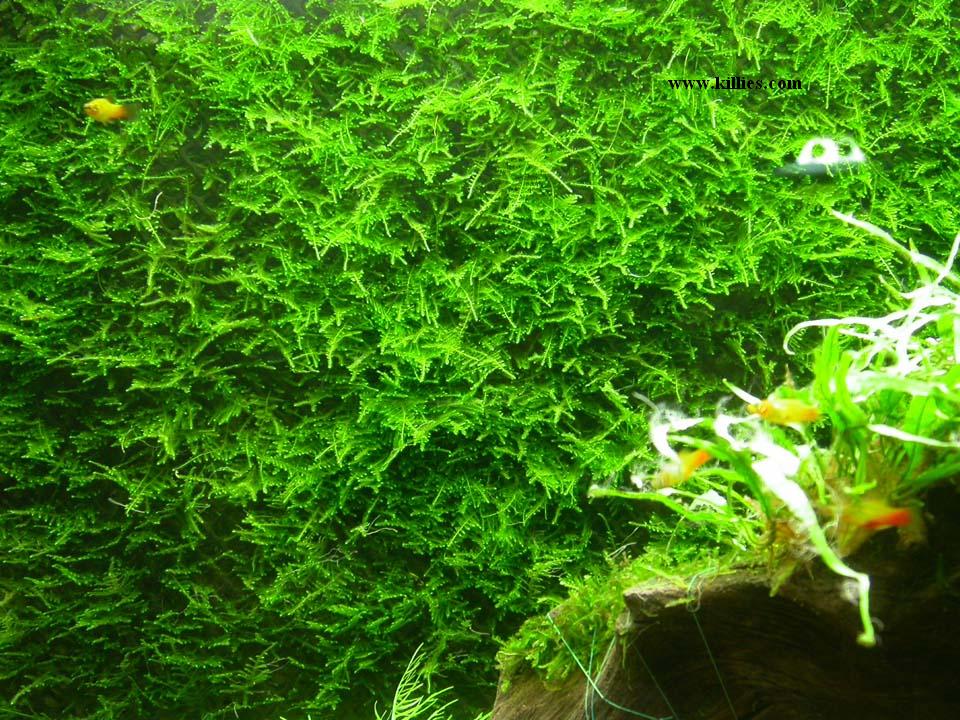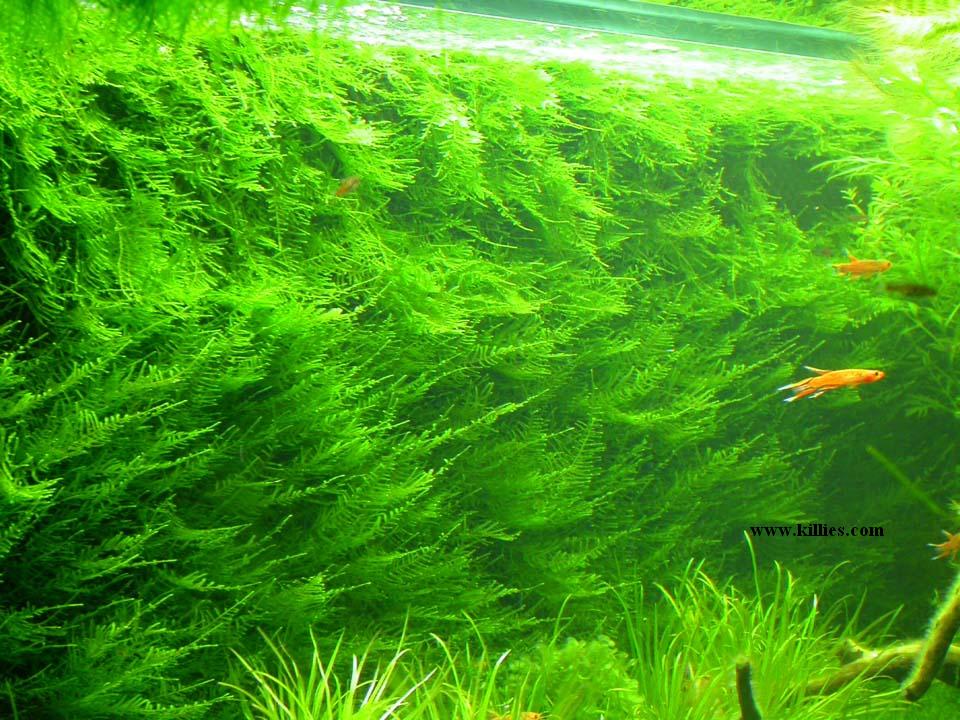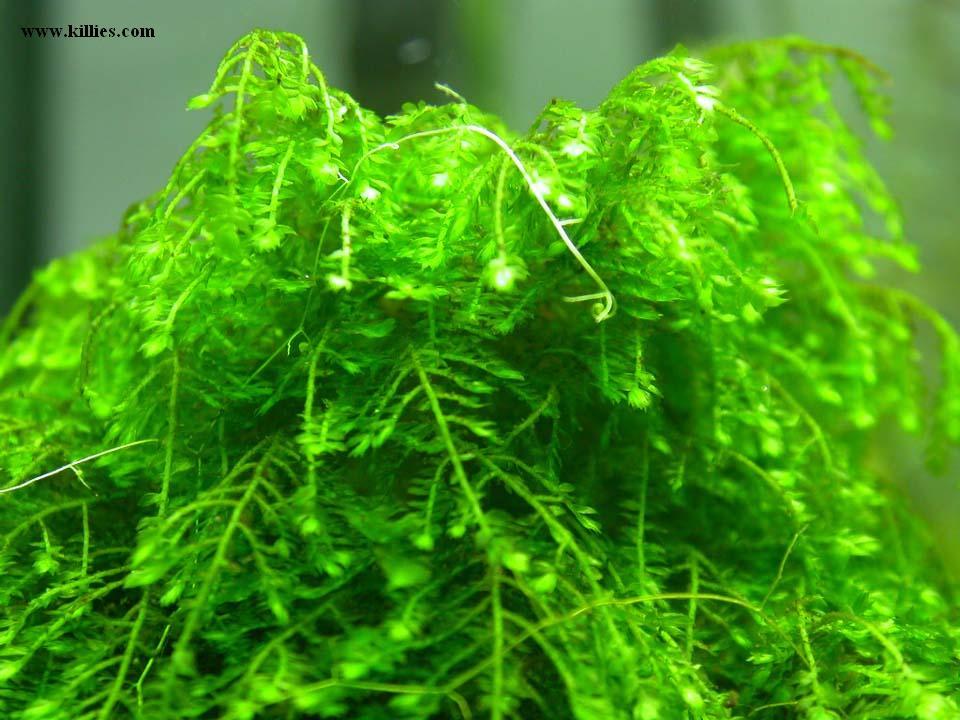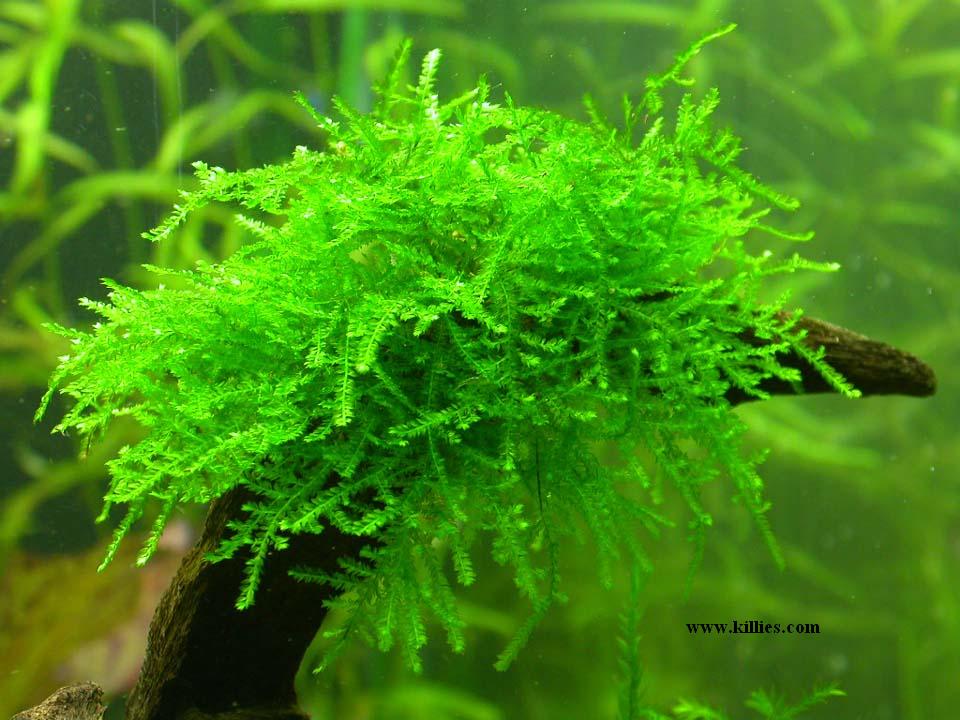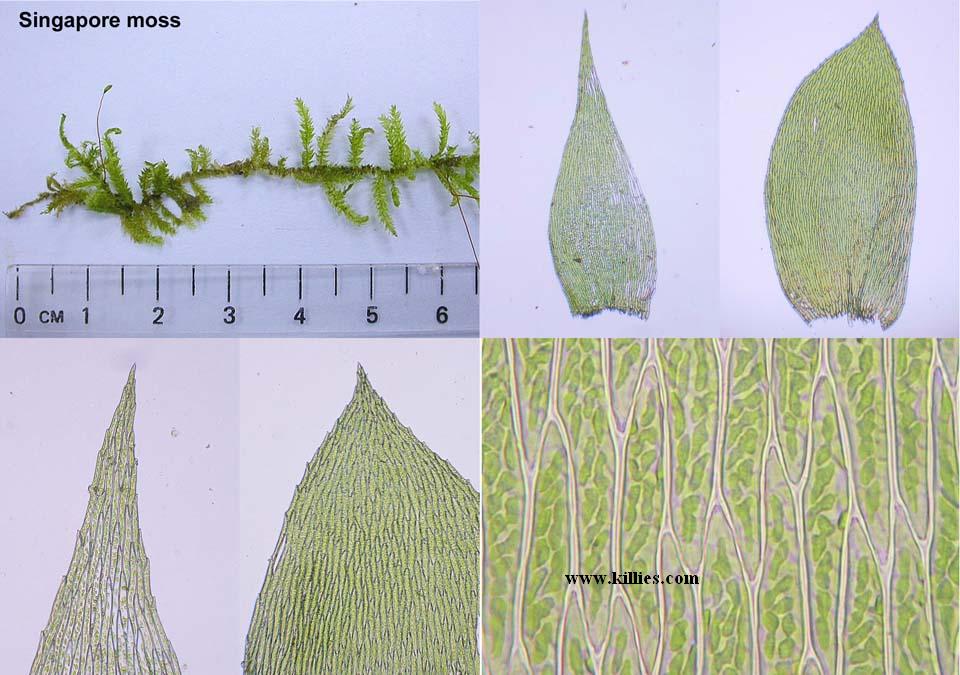In
a recent article in Aquatic Gardener (vol. 18 (1): pp. 36-39, 2005),
it was reported that the aquarium hobbyists in Singapore are spoiled
in having many kinds of "aquatic" mosses available for planting in fish
tanks. Nonetheless, there is difficulty encountered in recognizing correctly
these different aquarium mosses available to the hobbyists and the growers.
Indeed, in Singapore, we have seen several plant samples traded under
the same common name, but have proven to be of different moss species
when examined under the microscope.
Aquarium
mosses, and for that matter, aquatic plants in general, readily change
their form, branching pattern and leaf shape when growing in water.
Aquarium plant enthusiasts know from experience that the emersed and
submersed forms of the same plant species, e.g. Myriophyllum sp.
(milfoil), can look different depending on the water and light factors.
It would seem therefore that for an accurate identification of the species,
one will have to depend on the less changeable plant characters, such
as the leaf cell morphology and the reproductive structures, as in the
case of mosses.
The
following discussion of morphological differences seen among aquarium
mosses grown in Singapore is based on an article published in 2004 in
Singapore Scientist (102: 8-11) prepared by the same authors. To help
the readers identify the plant specimen, photos of microscopic features
of individual aquarium moss species are reproduced here to serve as
pictorial guides. Readers are referred to Loh (2005), for photos of
the plant habit of various aquarium mosses reported in this article.
Although
widely grown as ornamental "aquatic plants" in aquaria these days, many
of the so-called aquarium mosses, except for the Java Moss and the Willow
Moss, are not aquatic in their natural habitat.
